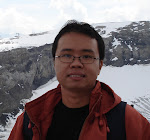Published in Habitat International 31 (2007) 232–242
Steve Kardinal Jusuf, N.H. Wong, Emlyn Hagen, Roni Anggoro, Yan Hong
Abstract:
The urban air temperature is gradually rising in all cities in the world. One of the possible causes is the drastic reduction in the greenery area in cities. It means that land use planning becomes critical in determining the environment quality. This study tries to investigate and identify land use types which have the most influence to the increase of ambient temperature in Singapore. The main tools are remote sensing data and geographical information system (GIS) to obtain a macro view of Singapore and carry out comprehensive analysis at the same time. The data were analyzed by utilizing both qualitative and quantitative methods.
Both the qualitative and quantitative analysis results show that the land usage will influence urban temperature. In the daytime, the order of surface temperature in different land use types is industrial, commercial, airport, residential, and park respectively. However, during the night time, the order is commercial, residential, park, industrial, and airport. Therefore, with appropriate land use planning, the urban heat island (UHI) could be mitigated.
Keywords:
Influence; Land use; Urban heat island; Temperature; Singapore; GIS; Remote sensing
Monday, June 4, 2007
Subscribe to:
Comments (Atom)
